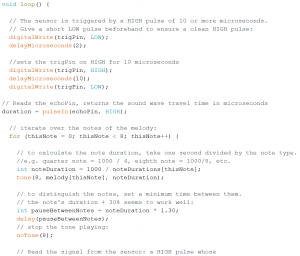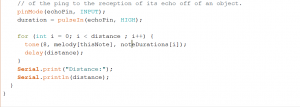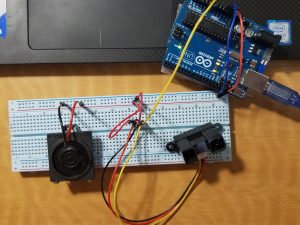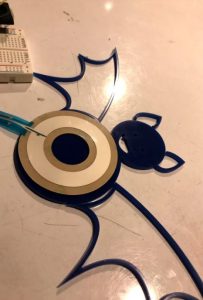I want to remodel the way sound is formed by emphasizing on its the sound waves. The amount of nodes in one period of a sound wave determines the pitch of the sound. Below is a diagram that explains this concept visually:
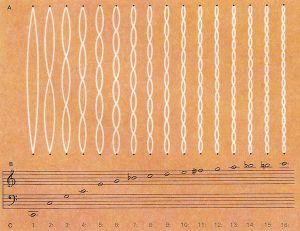
Inspired by the Spiral Wall, developed by the P&A LAB (Programming and Architecture LAB)
[link: http://pandalabccc.blogspot.com/2010/07/spiralwall-final-arduino-processing.html]
I want to make simulation of playing a violin by having infrared sensors detect the users’ finger position and then translate that data into the amount of twists in servos and the pitch of the speaker.
Sketch:
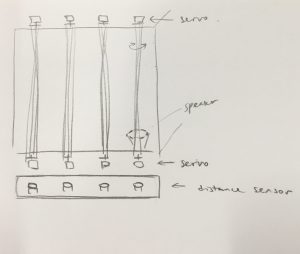
Working with one “string”:

Video: https://drive.google.com/file/d/0B0lS0mmjvCWPckJHZDg0OTFTZGc/view?usp=sharing
The next step would be to make the infrared sensors detect finger positions and map the data to controlling the speaker and servos.

